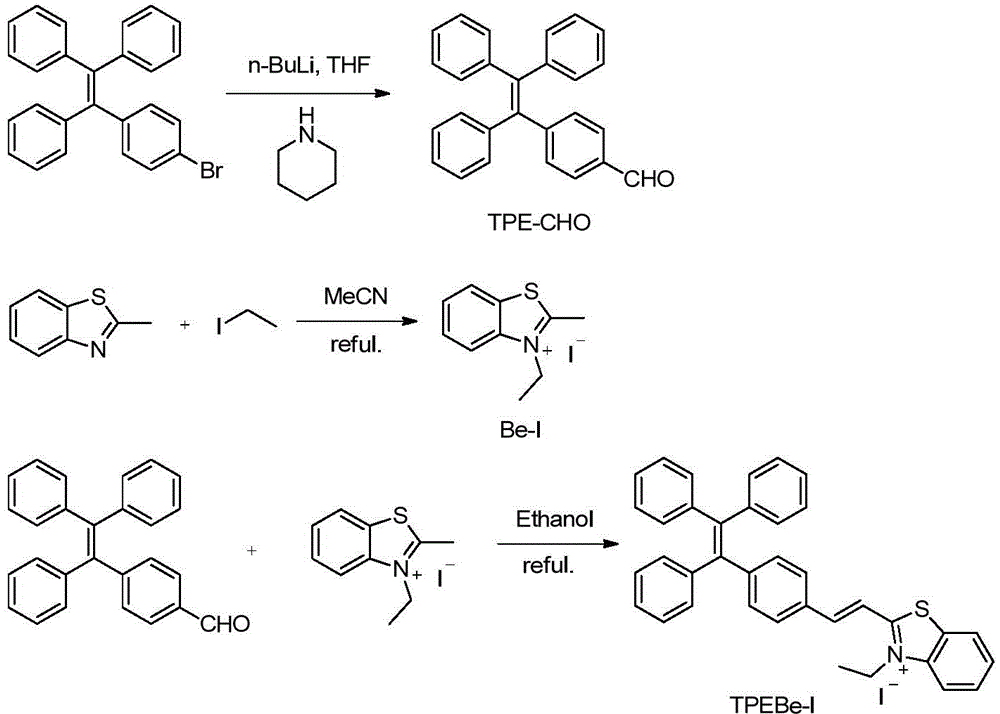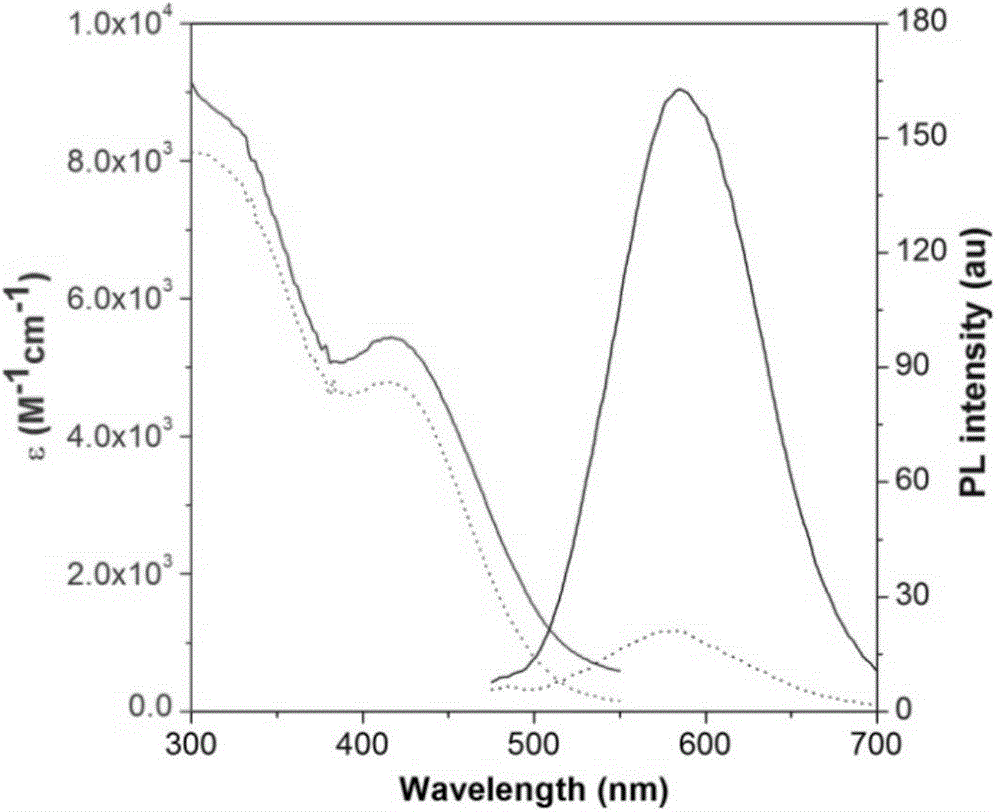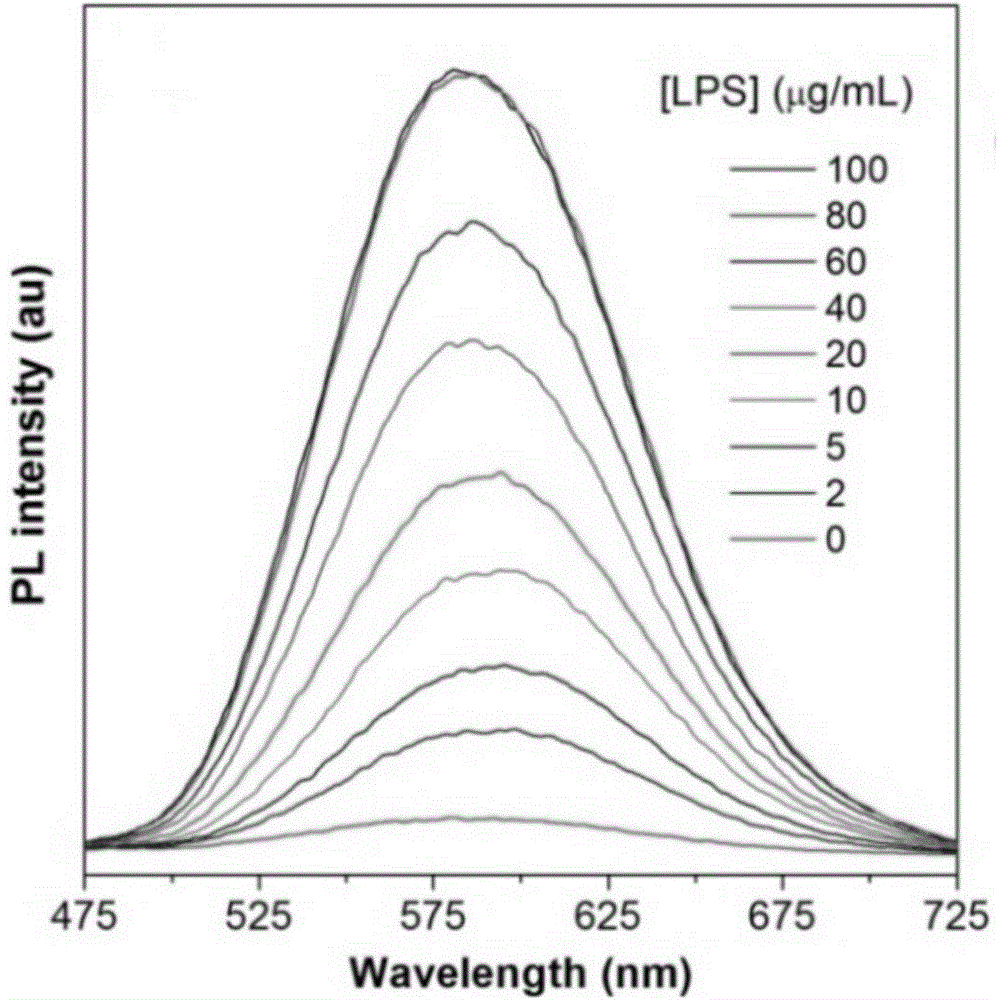Aggregation-induced emission principle-based fluorescent probe, its preparation method and use and endotoxin detection method
A technology of aggregation-induced luminescence and fluorescent probes, applied in the field of fluorescent probes based on the principle of aggregation-induced luminescence and their preparation, detection of endotoxin, can solve the problems of insufficient detection technology of endotoxin, shorten the time required for detection, and reduce the operation time Simple, highly specific results
- Summary
- Abstract
- Description
- Claims
- Application Information
AI Technical Summary
Problems solved by technology
Method used
Image
Examples
preparation example Construction
[0045] The preparation method of fluorescent probe is as follows: figure 1 shown, including the following steps:
[0046] 1) Dissolve TPE-Br in tetrahydrofuran solvent, place it at -88°C ~ -68°C, slowly add butyl lithium dropwise to the reaction bottle; after the dropwise addition, keep the reaction solution at -88°C ~ -68°C After reacting at ℃ for 2 hours to 4 hours, slowly add piperidine to the above reaction solution to form a mixture; then return to room temperature and continue the reaction for 1 hour to 3 hours; after the reaction is completed, the mixture is poured into water, extracted with dichloromethane, combined with organic phase, washed with saturated brine, dried over anhydrous magnesium sulfate, and finally the organic solvent was evaporated to dryness; the product 4-(1,2,2-triphenyl Ethylene)-benzaldehyde (abbreviated as TPE-CHO). The above-mentioned number of times of extraction with dichloromethane can be determined according to needs, can be extracted onc...
Embodiment 1
[0062] The preparation of fluorescent probe TPE-Be-I, the steps are as follows:
[0063] 1) Synthesis of TPE-CHO: Dissolve 5 mmol of TPE-Br in 50 ml of tetrahydrofuran solvent, place it at -78°C, slowly add 6 mmol of butyllithium (1.6 mol / L, 3.8 ml ); after the dropwise addition, keep the reaction solution at -78°C for 3 hours, slowly add 10 mmol of piperidine to the above reaction solution to form a mixture; then return to room temperature and continue the reaction for 2 hours, after the reaction is completed, pour the mixture into Extract in water three times with dichloromethane, combine the organic phases, wash with saturated brine, dry over anhydrous magnesium sulfate, and finally evaporate the organic solvent to dryness; use n-hexane and dichloromethane as eluents, and separate the product by column chromatography TPE-CHO, its nuclear magnetic resonance spectrum is as follows: 1 HNMR (400MHz, CDCl 3 ), δ (ppm): 9.90 (s, 1H), 7.61 (d, J = 8.2Hz, 2H), 7.19 (d, J = 8.2Hz,...
Embodiment 2
[0068] The preparation of fluorescent probe TPE-Be-I, the steps are as follows:
[0069] 1) Synthesis of TPE-CHO: Dissolve 2.5mmol of TPE-Br in 50ml of tetrahydrofuran solvent, place it at -68°C, slowly add 3mmol of butyllithium (1.6mol / L, 1.9 milliliters); after the dropwise addition, keep the reaction solution at -68°C for 2 hours, then slowly add 5 mmol of piperidine to the above reaction solution to form a mixture; then return to room temperature and continue the reaction for 1 hour. After the reaction is completed, the mixture is poured into water, extracted once with dichloromethane, combined organic phases, washed with saturated brine, dried over anhydrous magnesium sulfate, and finally evaporated the organic solvent to dryness; using n-hexane and dichloromethane as eluents, separated by column chromatography to obtain Product TPE-CHO;
[0070] 2) Synthesis of Be-I: Dissolve 5 mmol of benzothiazole and 10 mmol of ethyl iodide in 20 ml of acetonitrile, and reflux it for...
PUM
 Login to View More
Login to View More Abstract
Description
Claims
Application Information
 Login to View More
Login to View More - Generate Ideas
- Intellectual Property
- Life Sciences
- Materials
- Tech Scout
- Unparalleled Data Quality
- Higher Quality Content
- 60% Fewer Hallucinations
Browse by: Latest US Patents, China's latest patents, Technical Efficacy Thesaurus, Application Domain, Technology Topic, Popular Technical Reports.
© 2025 PatSnap. All rights reserved.Legal|Privacy policy|Modern Slavery Act Transparency Statement|Sitemap|About US| Contact US: help@patsnap.com



